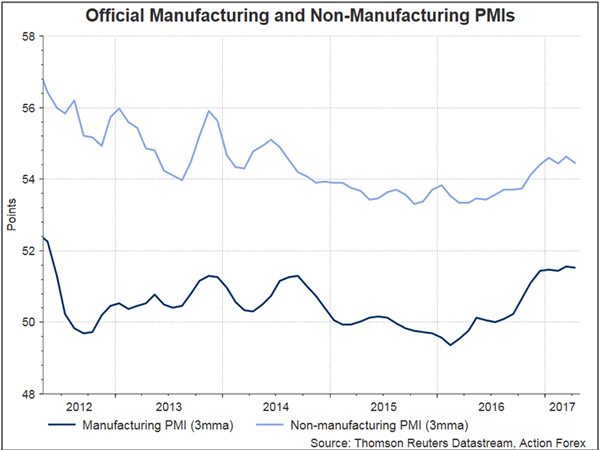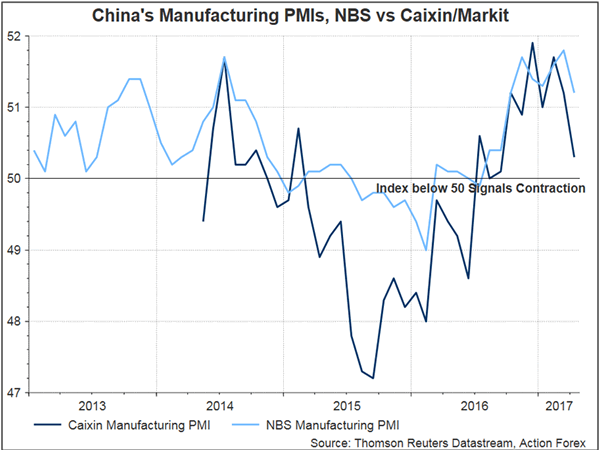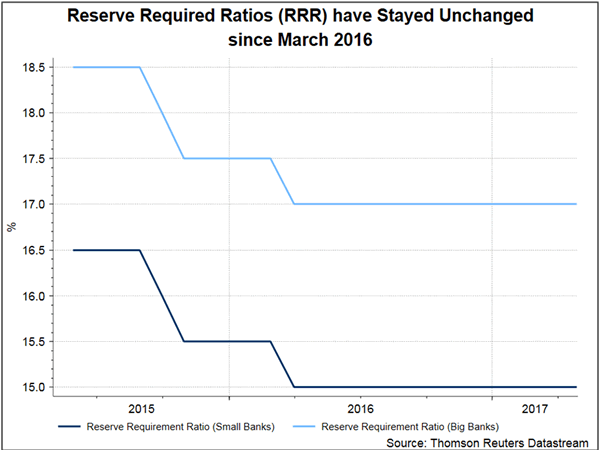China’s latest set of PMI data indicated slowdown in the country’s activity growth. The official manufacturing index was reported to have dropped -0.6 point to 51.2 in April, whist the non-manufacturing PMI declined -1.1 points to 54 for the month. The slowdown was broadly based: the ‘output’ index slipped -0.4 point to 53.8 and the ‘new orders’ index dropped -1point to 52.3. The ‘new export orders’ index fell for the first time in 4 months, losing -0.3 point to 50.5, although the three-month moving average remained up. The ‘input price’ index sank -7.5 points to 51.8. The trend indicates that PPI inflation should have slowed more sharply in April. Recall that the March reading was +7.6% and the February reading was a record higher of +7.8%. The only sub-index that has shown improvement was the ‘stock of finished goods’ index, which gained +0.9 point to 48.2.


Activity Growth in Small- and Medium- Sized Firms Also Moderated
Separately, the Caixin/ Markit manufacturing PMI fell -0.9 point to 50.3, the lowest point since September, in April. The market had anticipated a modest rise to 51.4. As the accompanying statement suggested, "the sub-indexes of output and new business both fell to the weakest levels since September, while the employment index dropped to the lowest in three months". It added that "the downward pressure on manufacturing gradually emerged in April, with all indicators weakening. The Chinese economy may be starting to embrace a downward trend in the near term as prices of industrial products decline and active restocking comes to an end".
Both reports indicated that activity growth in China has peaked in March. Weakness in trade expansion and the government’s tightening in the monetary were likely the causes. Inflationary pressure in the manufacturing sector also eased in April, from the peak in the first quarter of the year. We would get more insight after the trade balance report is released on May 8.
PBOC Trimmed Liquidity Injection in April
In a separate note, PBOC injected RMB590.3B to the market in April, down -18% from the previous month. Of which, RMB495.5B was from the medium-term lending facility (MLF) while the rest from standing lending facility (SLF). Looking into the composition of MLF, RMB 128B was 6-month loan and RMB367.5B was 1-year loan. Outstanding SLF loans were at RMB10.27B at the end of April, down from RMB70B at end-March. This represents a net drain of RMB59.7B. The central bank also injected RMB 83.9B of pledged supplementary lending (PSL) facility to a number of commercial, sending the total of PSL to about RMB2.3 trillion at the end of April, up from RMB2.22 trillion the same period last month. PBOC has been reliant on open market operation, rather than adjustments of interest rate and required reserve ratio, to achieve its monetary policy stance. The overall trend of liquidity injection remains in line with the government’s ‘prudent and neutral’ policy, which aims at cooling the excessive credit growth but not harming economic stability.















